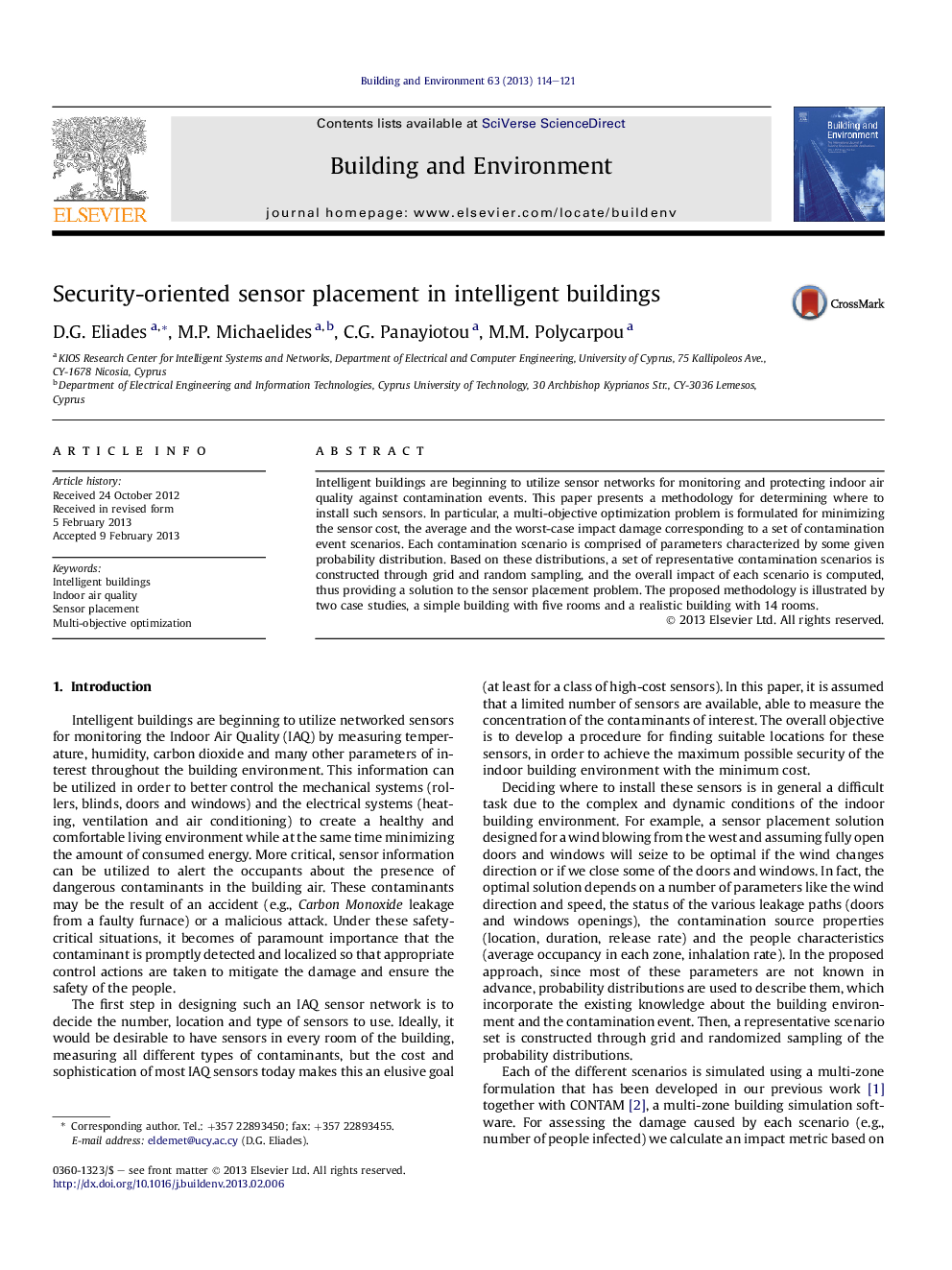| Article ID | Journal | Published Year | Pages | File Type |
|---|---|---|---|---|
| 248431 | Building and Environment | 2013 | 8 Pages |
Intelligent buildings are beginning to utilize sensor networks for monitoring and protecting indoor air quality against contamination events. This paper presents a methodology for determining where to install such sensors. In particular, a multi-objective optimization problem is formulated for minimizing the sensor cost, the average and the worst-case impact damage corresponding to a set of contamination event scenarios. Each contamination scenario is comprised of parameters characterized by some given probability distribution. Based on these distributions, a set of representative contamination scenarios is constructed through grid and random sampling, and the overall impact of each scenario is computed, thus providing a solution to the sensor placement problem. The proposed methodology is illustrated by two case studies, a simple building with five rooms and a realistic building with 14 rooms.
► Installation of air quality sensors in indoor building environments. ► Multi-objective optimization program that minimizes sensor cost and impact risk. ► Contamination scenarios construction based on probability distributions. ► Sensor placement optimization with respect to the contamination scenarios. ► Evaluation of methodology using building case studies.
